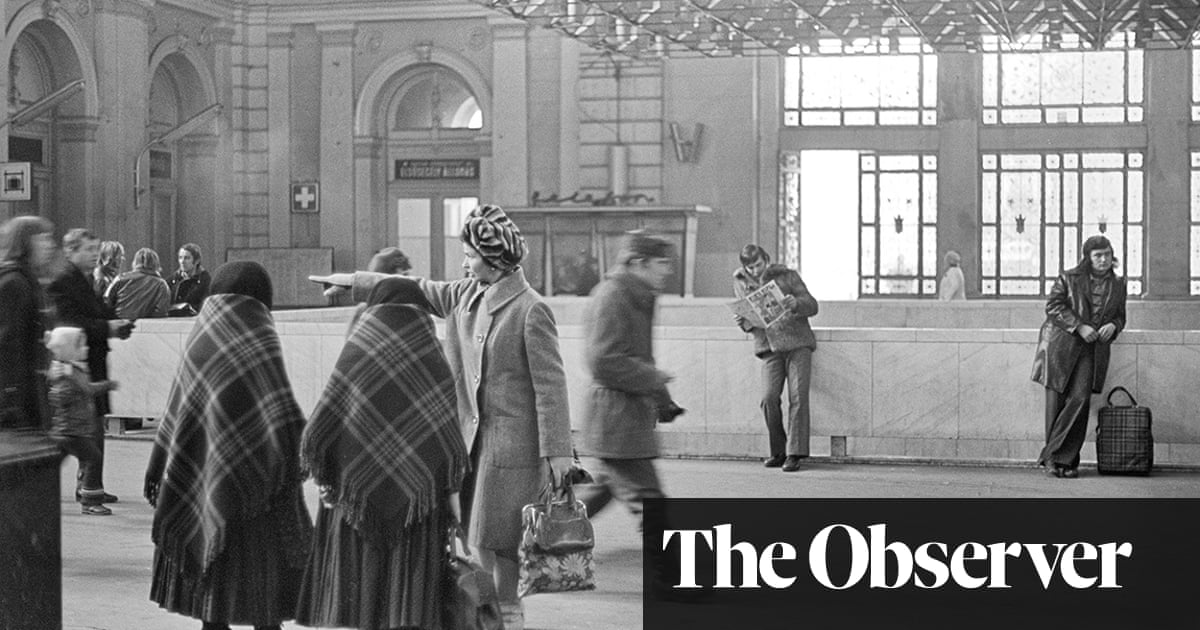There is a fairytale quality to Bertien van Manen’s 1975 photograph of the arrivals hall at Budapest Keleti train station. Among the questions it demands is: who are the two women in shawls and where might they be going? (And then there is the slight double take required to be sure that the pointing woman’s arm is not somehow on both sides of the right-hand shawl-wearer’s head.)
The otherworldly atmosphere of the photograph was appropriate to Van Manen’s quest. Her journey to Budapest marked a sliding doors moment in her career. Up until then, the photographer, who died last month aged 89, had a successful career in Amsterdam working for fashion magazines. But then she started looking hard at the pictures in Robert Frank’s landmark odyssey, The Americans. She felt the need to be on the road, in curious places. She was 40, her children were growing up, so she took a trip to Budapest, then almost as inaccessible as Narnia.
Her photographs from that journey have hardly been seen before, and are about to be published in a new monograph. They convey the freedom Van Manen appeared to feel from finding time just to look, without any commercial imperative. She dwelt on the ways that time appeared to have a different quality in this alternative world. People move without much urgency; you can almost hear clocks ticking.
After Budapest, Van Manen never really looked back. She travelled extensively in the former Soviet Union, and Appalachia, embedding herself in the life of communities unlike her own. She planned to call the series from Hungary “I Will Be Wolf”, a line borrowed from the Budapest-born poet Attila József; the quote sounds like a remembered statement of intent. Having let the world come to her, for the first half of her life, the photographer would now be on the prowl, in search of it.
after newsletter promotion

